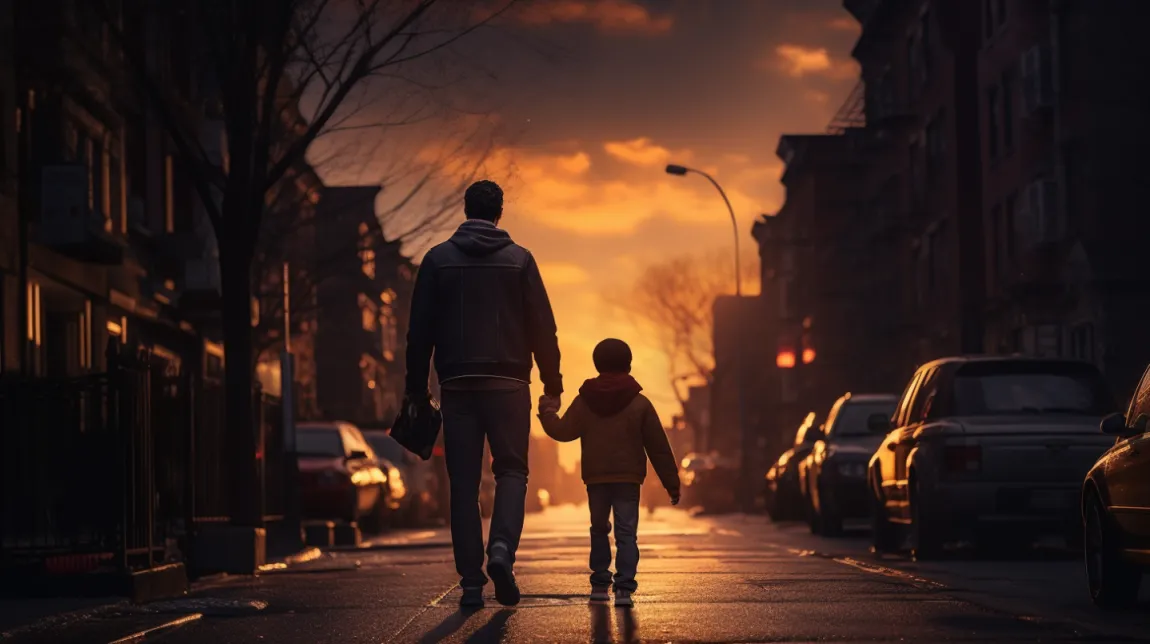As a father, you're seen as a superhero by your children. You possess the capability to instruct them not only in tying their shoelaces but also in self-defense. However, it's a subtle equilibrium: you need to enhance their self-assurance regarding their skills without inducing fear. By providing a sense of belonging and reassurance and maintaining a composed demeanor, you can steer your children toward understanding self-defense. This isn't about harboring fear, but about feeling strong and safe. Now, let's discuss how you can impart this superpower to your children without transforming them into perpetual worriers.
Understanding the Basics of Self-Defense
Before teaching your children self-defense, it's important to become familiar with several key principles. Grasping defensive methods and the ethics of self-defense will equip you and, by extension, your kids.
Defensive methods extend beyond physical movements. They also involve mental resilience and the importance of avoiding conflict as well as dangerous places - or at least preparing properly before entering those spots. This includes Instilling in them the significance of staying calm and evaluating situations before acting. Encourage them to use their words as their initial response, their feet next (to move away), and their fists as a last resort. It's not about emerging victorious from a confrontation, it's about avoiding harm.
Ethics in self-defense involves understanding the appropriate times and ways to apply these methods. Emphasizing that self-defense training shouldn't be used as a pretext for aggression or as an open invitation to inflict harm on others is essential. It's about safeguarding oneself, not inciting conflict.
Lastly, remember that the goal is to promote safety, not instill fear. The aim is not to make them perceive the world as a threatening place, but rather to show them that they are capable of and entitled to protect themselves. They are rightful members of this world, and they deserve to feel secure in it.
Self Defense Vs Weapons
Another key point that is important to discuss with your children who may be interested in martial arts and self-defense classes is that there's a critical difference between weapons training - especially lethal ones such as firearms, and also non-lethal options like a pepper spray gun.
That key difference is that why most self defense classes focus on empowering the individual to have a quiet confidnce to analyse situations and mitigate risks, weapons tend to make people overly confident and this can lead to its own dangers.
The Importance of Confidence Building
Teaching your child self-defense while avoiding paranoia can be achieved by fostering their confidence. Confidence is not synonymous with fearlessness, but rather it's about nurturing bravery in the presence of fear. This bravery can serve as a robust protective barrier, safeguarding your child from potential threats without causing unnecessary worry.
Enhancing self-esteem is a vital element in this scheme. When your child has a positive self-image, they tend to rely on their instincts and hold their ground when needed. Begin by acknowledging their strengths and accomplishments, regardless of their size. This can aid them in visualizing their capacity and growing confidence in their skills.
Prompt your child to regularly challenge their boundaries. Whether that involves taking up a new sport or voicing their opinions in a group, such experiences can bolster their resilience and confidence. Equally important is your role as a supportive figure when they falter. Your reassurance can strengthen the belief that making mistakes is acceptable and that courage is about overcoming fear, not avoiding it.
Keep in mind, a child with confidence does not only possess improved self-defense skills but is also better prepared to fearlessly navigate life.
Teaching Risk Assessment and Awareness
Often, it can be beneficial to guide your child in understanding risk assessment and awareness, important skills for effective self-defense. It's not about creating anxiety, but about equipping them to make wise choices that ensure their safety. Here, preventive actions are key.
Let's simplify it into four understandable parts:
- Identify Safe Spaces: Guide your child to recognize locations where they can find refuge or assistance if necessary. This could be a nearby shop, a neighbor's home, or even a crowded street.
- Recognize Possible Dangers: Assist them in understanding that danger can present itself in many ways and from varied sources. It's vital for them to recognize risky situations and respond appropriately.
- Trust their Instincts: Motivate your child to rely on their intuition. If something doesn't feel right, it likely isn't. Assure them that it's acceptable to leave the situation.
- Learn to Say No: Instruct your child about the power of the word 'No'. It's a strong self-defense mechanism that can enable them to establish boundaries and safeguard themselves.
Keep in mind, the aim is to nurture a confident, aware child who feels secure in their environment, not a scared one.
Balancing Knowledge With Fear
In the process of teaching your child self-defense, maintaining a balance between gaining knowledge and the risk of instilling fear is important. This equality is a delicate act, necessitating careful thought and precision. As a parent, your instinct to protect might push you to emphasize the dangers in the world, but be mindful that fear can be immobilizing.
Instead, concentrate on managing fear. Show your child that fear is a normal feeling, a natural reaction to possible threats. It's not something to be embarrassed about, but rather a survival tool. At the same time, reassure them that the world is not just full of risks. Innumerable instances of kindness, compassion, and humanity outweigh the negatives.
Give them knowledge and techniques to protect themselves, whilst also nurturing a sense of security and self-confidence. Urge your children to be alert and aware, not paranoid and scared. Make them understand that self-defense isn't about living in fear, but about being ready to bravely and resiliently face any situation.
With this approach, you'll not just equip your children with self-defense skills, but also inspire them to navigate the world fearlessly and confidently.
Reinforcing Positivity in Self-Defense Practice
Your child's self-defense practice can turn into a powerful experience when you amplify positivity and trust in their skills. Defense Positivity revolves around emphasizing inner strength rather than external threats.
- Positive Reinforcement: Recognize their efforts consistently. A simple 'Great job!' after they execute a technique can boost their self-esteem and solidify their faith in their skills.
- Set Realistic Goals: Don't demand immediate mastery of a technique. Progress is the key, not perfection. Commemorate small wins and use every practice session as a stepping stone towards a larger objective.
- Encourage Peer Interaction: Allow them to practice with friends or siblings. This fosters camaraderie and a sense of belonging, making the learning process more pleasurable.
- Model Positivity: Display your belief in their abilities. Your trust in them will instill self-confidence.
Bear in mind, it's not about creating fear, but cultivating bravery. You are not training them for a fight, but for life. They should learn to stand up for themselves, to be resilient, and to be confident. With your backing and positive reinforcement, your child will perceive self-defense not as a threat, but as a tool for empowerment.
Conclusion
So, dads, it's important to foster confidence, not fear in your children. Show them how to evaluate risks and remain alert to their environment. Offer them the knowledge of self-defense as a resource, not a weapon. Promote a positive attitude in their practice and consistently remind them it's about personal safety, not paranoia. This may seem like a challenging responsibility, but with patience and understanding, you can lead them towards becoming confident, not frightened. You've got this!
Hey James Hills wants you to share this!

